0 to 10 volts output pressure transducers with amplified signal conditioning electronics and 3 or 4 wire configuration for generating a 0-10Vdc analog signal which corresponds to a specified pressure range.
Products
 DPS300 User Switchable Pressure Range, Volts or Current Output Low DP Sensor - The DPS 300 is a low range HVAC differential pressure sensor. The lowest possible pressure range is 0...100 pascals. 2 or 3 switchable pressure ranges, plus volts or current output are included with most standard configurations.
DPS300 User Switchable Pressure Range, Volts or Current Output Low DP Sensor - The DPS 300 is a low range HVAC differential pressure sensor. The lowest possible pressure range is 0...100 pascals. 2 or 3 switchable pressure ranges, plus volts or current output are included with most standard configurations.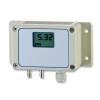 DPS200 HVAC Differential Pressure Transmitter - Differential air pressure sensor with a 10 volt or a 4-20mA output for building ventilation applications. Ranges from 0 to 6 mbar up to 0 to 1000 mbar.
DPS200 HVAC Differential Pressure Transmitter - Differential air pressure sensor with a 10 volt or a 4-20mA output for building ventilation applications. Ranges from 0 to 6 mbar up to 0 to 1000 mbar.
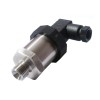 IMPLR Low Range All Stainless Steel OEM Pressure Sensor
IMPLR Low Range All Stainless Steel OEM Pressure Sensor TPSA Precision High Pressure Transducer
TPSA Precision High Pressure Transducer IMP Low Cost Pressure Sensor
IMP Low Cost Pressure Sensor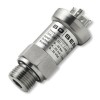 DMP331 Precision Pressure Transmitter
DMP331 Precision Pressure Transmitter
Applications
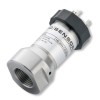 30000 psig 0-10Vdc output freshwater pressure sensor for high pressure valve test rigs - A high absolute range pressure sensor for testing high pressure valves and measuring pressure of freshwater over a range of 0 to 30,000 psi absolute from the 9/16 UNF female (AE HP type) process connection, and sending the corresponding 0-10Vdc signal through the DIN plug electrical connection.
30000 psig 0-10Vdc output freshwater pressure sensor for high pressure valve test rigs - A high absolute range pressure sensor for testing high pressure valves and measuring pressure of freshwater over a range of 0 to 30,000 psi absolute from the 9/16 UNF female (AE HP type) process connection, and sending the corresponding 0-10Vdc signal through the DIN plug electrical connection.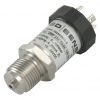 All welded wetted parts 10000 psig 0-10Vdc out pressure sensor for hydraulic control use - A robust all welded wetted parts high range pressure sensor for hydraulic control use to measure pressure of mineral hydraulic oil over a range of 0 to 10,000 psi g from the G1/2 EN837 male process connection, and sending the corresponding 0-10Vdc signal through the M12 connector electrical connection.
All welded wetted parts 10000 psig 0-10Vdc out pressure sensor for hydraulic control use - A robust all welded wetted parts high range pressure sensor for hydraulic control use to measure pressure of mineral hydraulic oil over a range of 0 to 10,000 psi g from the G1/2 EN837 male process connection, and sending the corresponding 0-10Vdc signal through the M12 connector electrical connection. Blow moulding machine 10,000 psi GRAS NaK filled 10V melt pressure sensor - Plastic melt pressure sensor with a GRAS compliant NaK filling fluid, 10,000 psi high pressure range and 0 to 10 Vdc output signal for use on blow moulding machines.
Blow moulding machine 10,000 psi GRAS NaK filled 10V melt pressure sensor - Plastic melt pressure sensor with a GRAS compliant NaK filling fluid, 10,000 psi high pressure range and 0 to 10 Vdc output signal for use on blow moulding machines.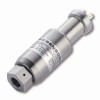 Cold isostatic press 5000 barg 0-10Vdc output high range freshwater pressure transducer - A high range pressure transducer for cold isostatic pressing use to measure pressure of freshwater over a range of 0 to 5,000 bar g from the 9/16 UNF female (AE HP type) process connection, and sending the corresponding 0-10Vdc signal through the DIN plug electrical connection.
Cold isostatic press 5000 barg 0-10Vdc output high range freshwater pressure transducer - A high range pressure transducer for cold isostatic pressing use to measure pressure of freshwater over a range of 0 to 5,000 bar g from the 9/16 UNF female (AE HP type) process connection, and sending the corresponding 0-10Vdc signal through the DIN plug electrical connection.
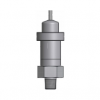 Nip roller 100 psi g 0-10Vdc output air pressure sensor for pressing laminated materials
Nip roller 100 psi g 0-10Vdc output air pressure sensor for pressing laminated materials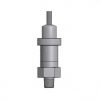 3000 psia high accuracy 0-10Vdc out pressure sensor for leak checking pressurized tanks
3000 psia high accuracy 0-10Vdc out pressure sensor for leak checking pressurized tanks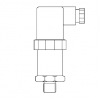 300 psi g range 0-10 volts output ceramic diaphragm pressure sensor
300 psi g range 0-10 volts output ceramic diaphragm pressure sensor -20 to +50 psig 0-10V out compound range liquid dispensing pressure sensor
-20 to +50 psig 0-10V out compound range liquid dispensing pressure sensor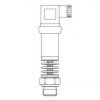 6 bar absolute 0-10V out high temperature freshwater pressure sensor for solar thermal systems
6 bar absolute 0-10V out high temperature freshwater pressure sensor for solar thermal systems 3000 psig range 0-10Vdc output digital display pressure transducer for hydraulic control use
3000 psig range 0-10Vdc output digital display pressure transducer for hydraulic control use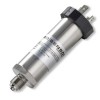 1000 mbar absolute vacuum range 0-10Vdc output air pressure sensor for research use
1000 mbar absolute vacuum range 0-10Vdc output air pressure sensor for research use 400 bar high range 0-10Vdc output engine oil pressure sensor with snubber for hydraulic control use
400 bar high range 0-10Vdc output engine oil pressure sensor with snubber for hydraulic control use
- 60000 psig range 0-10Vdc output engine oil pressure sensor for high pressure homogenization use
- 150 psig 0-10Vdc output freon refrigerant gas pressure sensor for refrigeration control systems
- 15psig 0-10Vdc output pressure sensor for nitrogen filled antenna line leak testing use
- 5psig 0-10V out freshwater pressure transducer and built-in display for water purifier use
- 25 psig range high resolution 0-10Vdc output air pressure sensor for leak testing use
- 5 psi dp 0-10V out air pressure sensor for automation flow rate testing use on a 15psi line
- 60psig range pharmaceutical pressure gauge and 0-10Vdc transducer with triclamp fitting
- 500-1100 mbar absolute 0-10Vdc out air pressure sensor for meteorological use
- 100 psi triclamp absolute 0-10Vdc output air pressure sensor for leak testing use
- High temperature -1…2 barg range 0…10Vdc out heat pipe pressure sensor for research use
- 10 mbar differential 0-10Vdc output air pressure sensor for building management use
- -50 to +50 mbar g compound range 0-10 volts output pressure sensor
Product Help
Checklist for 0 to 10 volts output pressure transducer requirements
Define your 0-10V output signal pressure transducer requirements using this checklist:
- Pressure range?
- Output signal? 0-10 volts
- Accuracy?
- Electrical connection?
- Process connection?
- Process media type?
- Temperature range?
